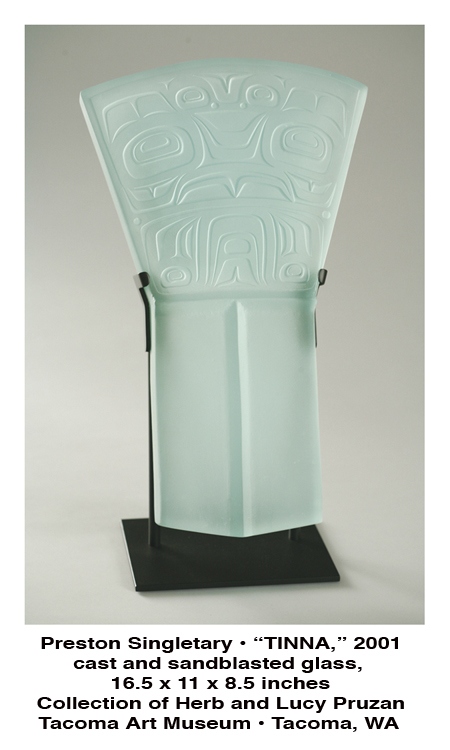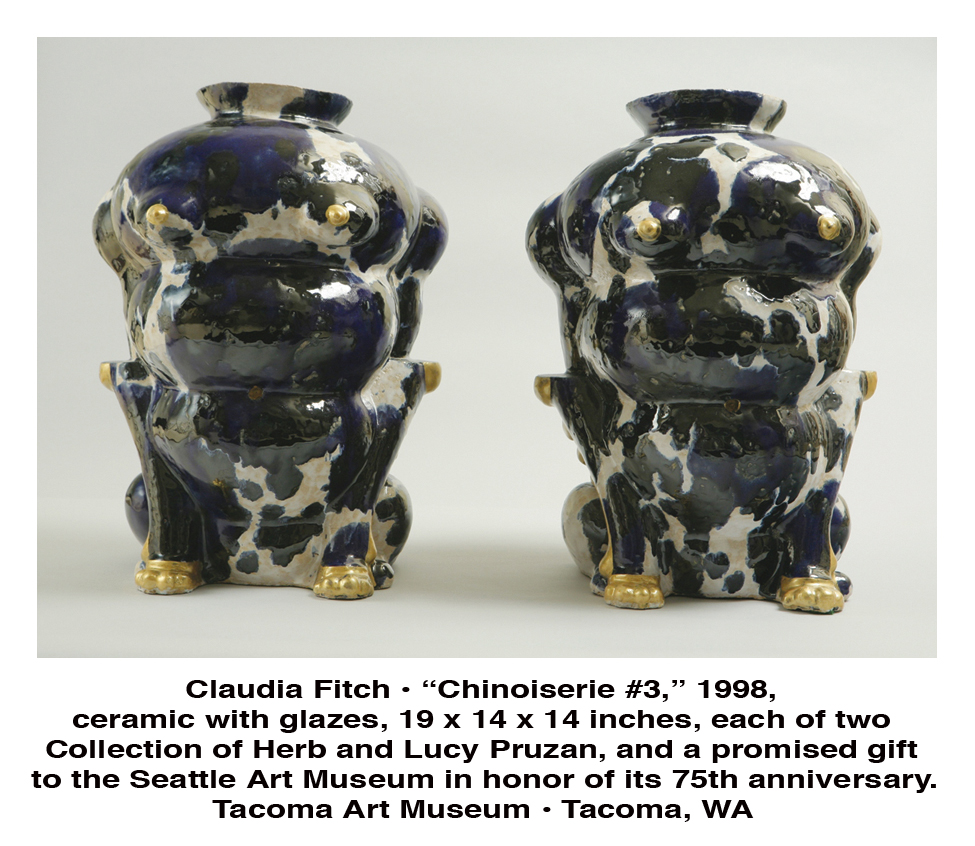
Soon after their 1958 wedding Lucy and Herb Pruzan wanted to do something to make their house a home. The answer was artwork and their first acquisition as a couple was a 1959 abstract painting by C. Louis Hafermehl purchased at the Bellevue Arts and Crafts Fair. This was the start of something big, the beginnings of a stellar collection of regional artworks that the Pruzans are still adding acquisitions to.
Poet Theodore Roethke would have said that the Pruzans learned by going where they had to go. Since they could not afford works by then well known artists such as Mark Toby and Kenneth Callahan the couple began a journey of discovering lesser known artists by talking with dealers, attending openings, and befriending the artists themselves. "They acquired art," says critic Matthew Kangas who wrote one of the catalog's essays, "by looking and learning and educating their eyes."
This method of acquiring art out of curiosity and love versus ego and investment glues this collection together in so palpable a way that the collection feels like an extension of the couple's relationship.
Rock Hushka, Curator of Contemporary and Northwest Art at the Tacoma Art Museum, described the Pruzan's as a fixture of Seattle's art scene, "They are known for attending receptions in Seattle." Gallery owner John Braseth says that he thinks they have come to every opening but three at his gallery in the past 30 years. No wonder the Pruzan's needed to forgo getting another family dog in order to free up time! In the catalog Herb Pruzan is quoted as saying, "What we look for in art is the excellent use of materials and techniques." The couple has literally invested in the ability for artists to remain here and grow.

Hushka describes a subtle chronology in the way the exhibit is composed. Besides wanting visitors to experience what it must be like to live with the art and ideas, Hushka and preparator Cyrus Smith designed the exhibit to reflect how the Pruzans collected. "They started with figuration and abstraction," explained Hushka, "then moved to glass and ceramics, and they most recently have collected landscapes."
The latest acquisition in the show is a large 2011 painting by Nathan DiPietro entitled "Elwha." The dam, so much in the news of late, is seen in the background yet is at the painting’s center. A stream flows toward us flanked by large, what look like old growth, trees. Above the stream nurse logs have fallen crisscrossed, looking like the laces of Mother Nature's corset. It's a stunning work by a young artist, clustered with other landscapes from the collection.
A number of works here make the eighties look good.
Paul Horiuchi's "Blue Transition #2" from 1981 is as transcendental a Morris Graves. Andrew Keating's "Interval" from 1986, painted with his then signature Pepto-Bismol palette, is now a weird classic. Michael Ehle's large gouache on paper titled "Five Wise, Five Foolish" is a breathtaking example of the late artist's work.
Matthew Kangas' catalog essay describes how the co-founders of the University of Washington's School of Art "combined Paris atelier methods with a Bauhaus philosophy espousing the equality of all the arts; hence, courses in graphic design, ceramics, metals, and textiles." This explains a lot about the wealth of craft in Northwest art in general and the influence of that program on artists in this collection.

A sampling of the heavy hitters and their works represented could go something like this:
Gaylen Hansen has never been so Guston-y! Jeffry Mitchell can do no wrong. Gene Gentry McMahon has a Country and Western singer's name (and a killer painting in this show). Claudia Fitch's fuzzy "Berry”"ogles Jamie Walker's minimalist pop sculpture "Handsome" across the way. Faye Jones' works are the closest thing to dreaming. Whiting Tennis made a sloppy, post-expressionist painting! Gloria DeArchangelis where have you been? Mark Calderon's refined skills can't hide emotion. Akio Takamori's "Actor" in porcelain and ink jet print allows us to magically compare something to itself. In David Kane's "Acme" blue collar climbs the stairs toward white. Howard Kottler's plate will surprise diners once the food is gone. Michael Stafford's sexy Hercules lives! Fred Bauer's 1970 "Super Cereal" is neon fortified while Eric Elliott's still life is gently visceral.
These artworks are moving toward history on a conveyor belt of time. I had a strange feeling walking through the gallery because enough time has passed that these artists have shifted from being my contemporaries - artists I saw at receptions or felt intimidated by, was glad for, or maybe jealous of - to being a canon of sealed up history that now belongs to the world.
Because these artists have risen like cream among us, we are also a part of it. So visit this show, which will not travel anywhere else, in order to find your place in this unique history.

Saylor Jones
Saylor Jones is a Pacific Northwest writer and illustrator. To view her work, visit www.saylorjones.com "Creating the New Northwest: Selections from the Herb and Lucy Pruzan Collection" is on view through October 6, at the Tacoma Art Museum located at 1701 Pacific Avenue in Tacoma, Washington. Museum hours are Wednesday through Sunday, 10 A.M. to 5 P.M. and Third Thursdays from 10 A.M. to 8 P.M. For more information visit the website www.TacomaArtMuseum.org.